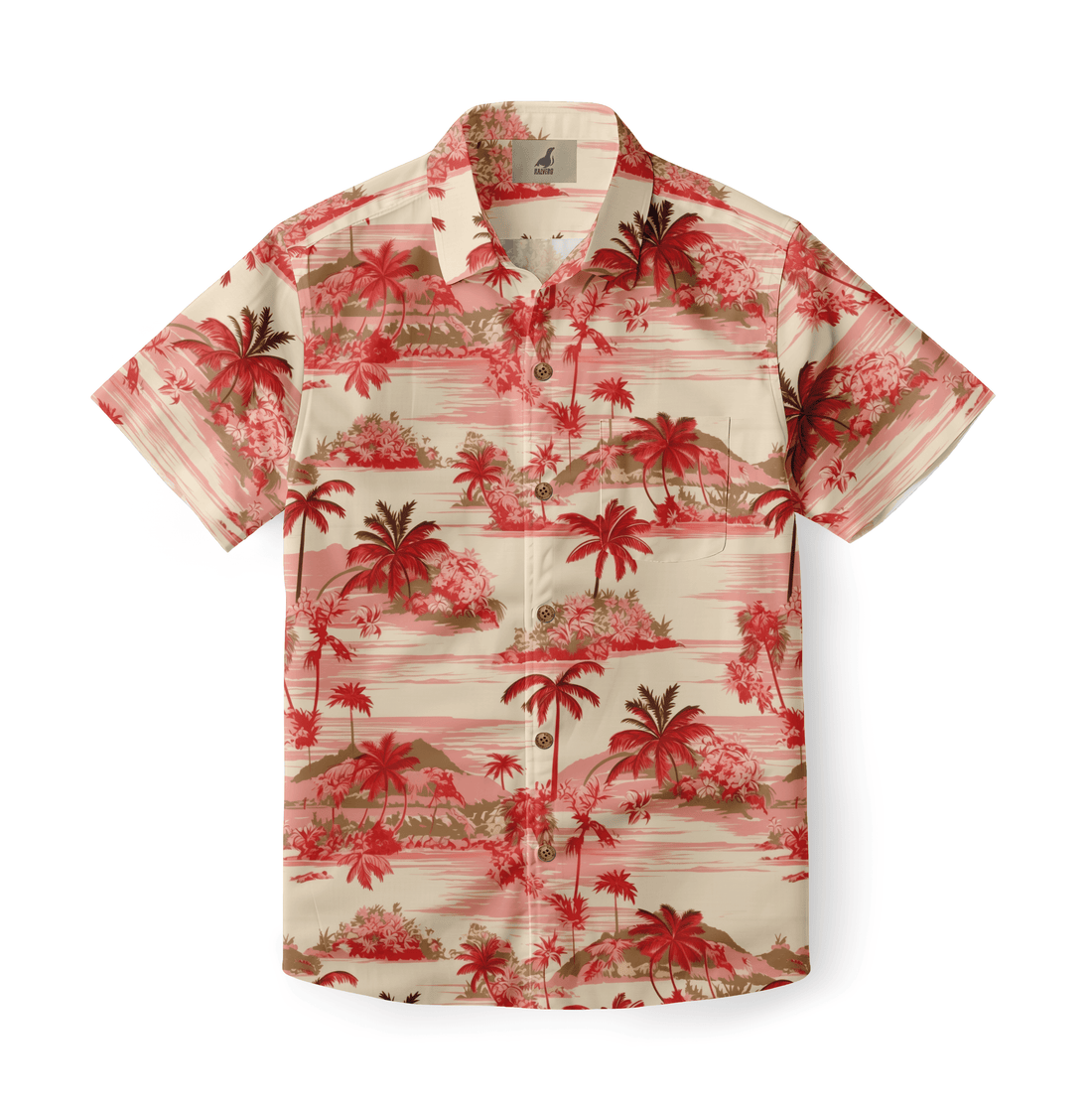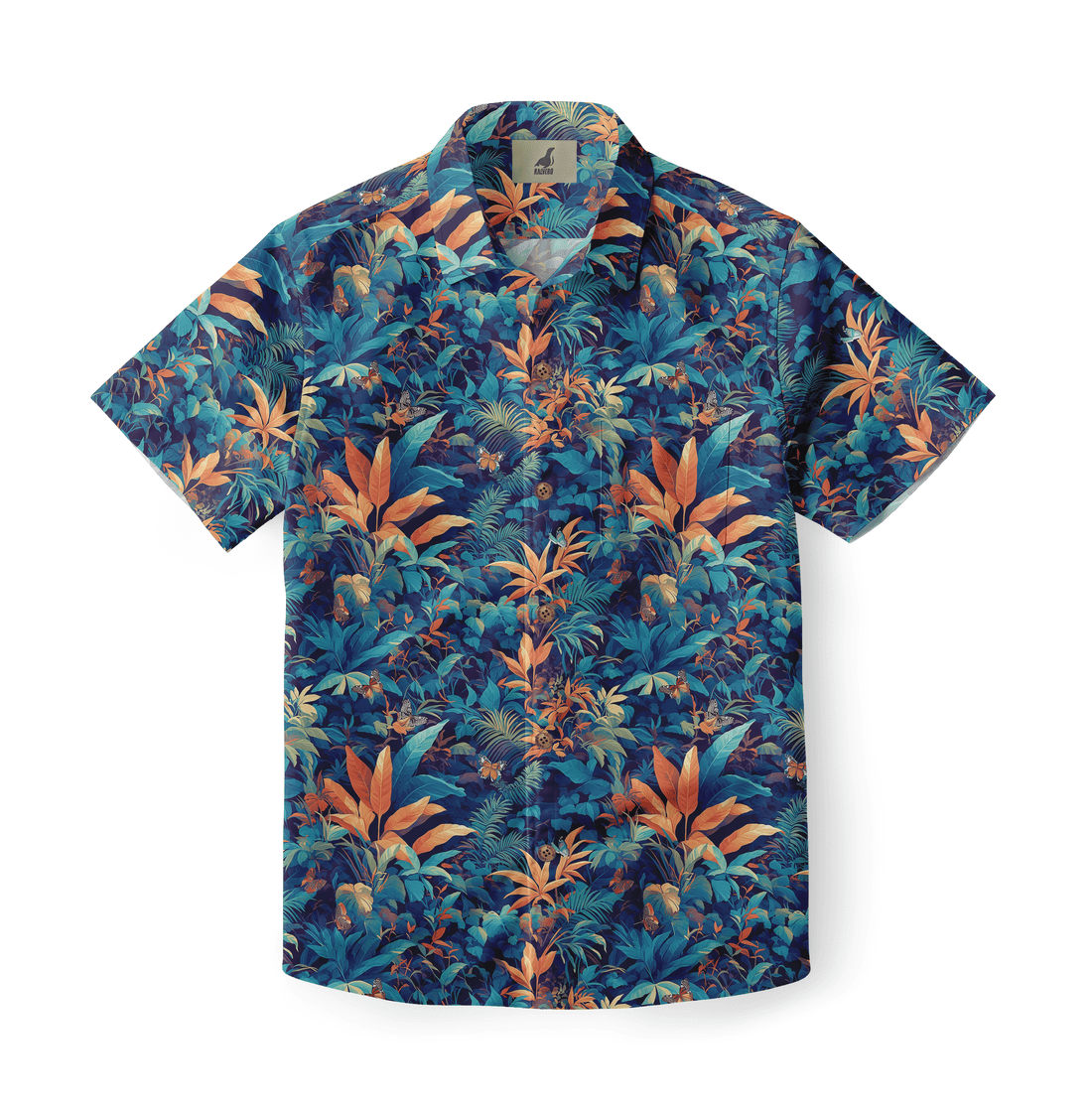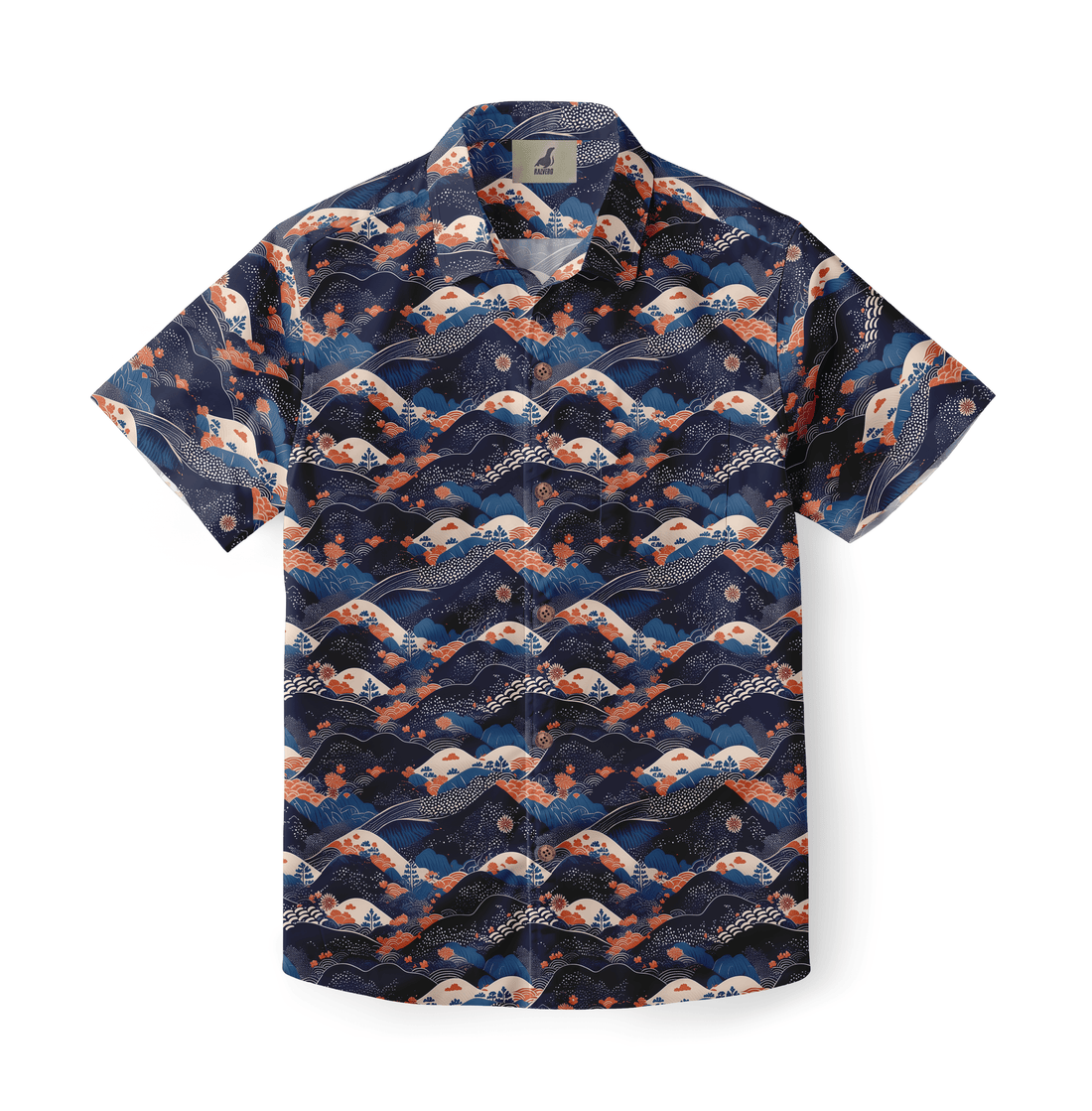The collar is one of the most defining features of any shirt. It frames the face and sets the overall tone of the garment. While the vibrant print of a Hawaiian shirt often gets the most attention, the collar style is a crucial detail. It dictates the shirt's formality, vintage, and overall aesthetic. This is your definitive Guide to Hawaiian Shirt Collar Styles. Understanding the nuances between a classic camp collar and a rare button-down version is key. It allows you to appreciate the shirt's rich history. It also helps you select the perfect Aloha shirt to match your personal style and the occasion.
The Anatomy of a Shirt Collar: What to Look For
To appreciate the differences, it helps to know some basic terms. The collar "points" are the tips at the front. The "spread" is the distance between these points. Some collars have a "collar stand," a separate band of fabric that helps the collar stand up. These elements determine how the collar sits and interacts with your neckline. A collar with a stand, like a typical dress shirt, has a more formal and structured appearance. A collar without a stand lies flat and open. This creates a more relaxed and casual feel. These subtle construction details are fundamental to the identity of different Hawaiian shirt collar styles.
The Quintessential Style: The Camp Collar
The most iconic and common collar on a Hawaiian shirt is the camp collar. This style is also known as a revere collar, a Cuban collar, or a convertible collar. It has a rich history tied to mid-20th-century leisurewear. It was designed for comfort and relaxation in warm climates. The defining feature of a camp collar is its one-piece construction. The collar is cut from the same piece of fabric as the shirt's facing. There is no separate collar stand. This allows the collar to lie flat and open against the chest, creating a natural V-neckline.
This design is the perfect match for the spirit of the Aloha shirt. The open neckline is breathable and comfortable in tropical heat. It creates a laid-back, informal silhouette. The camp collar is designed to be worn without a tie. It is the epitome of casual elegance. When you picture a classic Hawaiian shirt, you are almost certainly picturing one with a camp collar. Its relaxed structure and effortless style are fundamental to the garment's identity. This is the primary Aloha shirt collar type.
Key Hawaiian Shirt Collar Styles and Their Features
While the camp collar is dominant, it is not the only style. Over the decades, several variations have emerged. Each one offers a slightly different look and feel. These styles often reflect the fashion trends of the era in which they were popular.
-
The Camp (Revere/Cuban) Collar: The classic, one-piece collar that lies flat and open.
-
The Notched Lapel Collar: A variation of the camp collar with a distinct notch, similar to a suit jacket.
-
The Button-Down Collar: A more structured collar with points that fasten to the shirt with small buttons.
-
The Spread Collar: A more traditional dress shirt collar with a wider distance between the points.
These different Hawaiian shirt collar styles tell a story. The camp collar and its variations speak to the shirt's roots in leisure and resort wear. The button-down and spread collars show how the shirt was adapted. It was integrated into more mainstream and even preppy fashion trends, especially in the mid-20th century. Choosing a shirt with a specific collar is a way to select a piece from a particular moment in the Aloha shirt's fascinating history.
The Notched Lapel Collar: A Tailored Variation
The notched lapel collar is a close cousin to the camp collar. It shares the same open, relaxed feel and is also designed to be worn without a tie. The key difference is a small, but significant, detail. A true camp collar has a continuous, smooth lapel. A notched lapel collar has a distinct notch cut into the lapel. This is the same kind of notch you would find on a suit jacket or a blazer. This small detail adds a touch of tailored structure to the otherwise relaxed collar.
This style was particularly popular on shirts from the 1940s and 1950s. It gives the garment a slightly more formal, vintage feel. It is a subtle nod to classic tailoring. A shirt with a notched lapel often feels a bit more constructed than one with a simple camp collar. It is a great choice for those who appreciate the details of vintage menswear. It provides a sharp, clean look while maintaining the essential casual spirit of a Hawaiian shirt.
Style Comparison: Camp Collar vs. Button-Down Collar
| Feature | Camp Collar | Button-Down Collar |
|---|---|---|
| Structure | One-piece, no collar stand. Lies flat. | Two-piece, with a collar stand. Sits up. |
| Formality | Casual, relaxed, leisure-focused. | Smarter, more structured, preppy. |
| Neckline | Creates a natural V-neck. | Can be buttoned to the top. |
| Styling | Worn open at the neck, without a tie. | Can be layered under a blazer; can be worn with a tie (vintage look). |
| Era | Quintessential 1950s leisurewear. | Popular in 1960s Ivy League and surf styles. |
This comparison highlights the fundamental difference in purpose and aesthetic. The camp collar is designed for pure relaxation. Its entire structure is built around creating an open, breathable neckline. The button-down collar, on the other hand, brings a touch of East Coast formality to the tropical shirt. Its structure is borrowed directly from traditional dress shirts. Choosing between these Aloha shirt collar types is a choice between two different style philosophies. One embraces pure leisure, while the other blends island style with classic menswear rules.
The Rarer Choice: Button-Down Hawaiian Shirt Collar Styles
Although less common, Hawaiian shirts with button-down collars have a rich history. This style became popular in the 1960s. American Ivy League style began to influence fashion globally. Brands started producing Aloha shirts with the same button-down collars found on Oxford cloth shirts. This created a unique fusion of styles. It was part preppy, part surfer, and entirely cool. The buttons on the collar points keep the collar from flapping up. This creates a tidier, more controlled look.
A button-down Hawaiian shirt can be styled in ways a camp collar shirt cannot. It looks very sharp layered under a navy blazer or a casual sport coat. The structured collar holds its shape perfectly under a jacket. For a very specific, retro look, it can even be worn with a tie. This style is for the man who loves the expressive prints of a Hawaiian shirt but prefers the familiar structure of a traditional button-down shirt. It is a more conservative but equally stylish option.
How Collar Style Influences Your Overall Look
The collar you choose should align with your overall style goals. If you want a classic, laid-back, vacation-ready look, the camp collar is your best choice. It is the most authentic and effortless option. Style it by leaving the top button undone. Pair it with shorts, linen trousers, or relaxed-fit jeans. This is the quintessential look for a barbecue, beach trip, or casual summer day. The open V-neck creates a relaxed and flattering silhouette that is universally appealing.
If you are aiming for a smarter, more put-together outfit, consider a button-down collar. This style is perfect for a smart-casual event. It can be worn in a creative workplace or for a summer evening party. Pair it with well-fitting chinos and leather loafers. The structured collar instantly elevates the entire outfit. It provides a polished frame for the vibrant print. Understanding how the collar impacts the formality of your look allows you to use the Hawaiian shirt in a much wider range of situations.
Choosing the Right Collar for Your Face Shape
You can even use the collar style to flatter your facial features. A camp collar naturally forms a V-neck shape. This has an elongating effect on the neck and face. It is a particularly flattering choice for men with rounder faces or shorter necks. It helps to draw the eye downward, creating a sense of vertical length. This is one of the reasons for the camp collar's widespread and enduring appeal. It is an almost universally flattering design.
A button-down collar, on the other hand, has a different effect. The vertical lines of the collar points can add perceived length. The structure can provide a nice counterbalance to a longer or narrower face shape. The buttons also keep the collar points neatly in place. This creates a clean, symmetrical frame around the chin and jawline. While these are subtle details, they can make a difference in how balanced and harmonious your overall appearance feels.
Frequently Asked Questions
What is a "convertible collar"?
A convertible collar is another name for a camp collar. The term "convertible" refers to the fact that it can be worn open, lying flat, or it can be buttoned to the very top, often with a small loop closure. This versatility is one of its defining features, allowing it to be adapted to slight changes in temperature or style preference.
Can I wear a tie with a camp collar shirt?
No, a camp collar is not designed to be worn with a tie. It does not have a collar stand, so a tie would not sit correctly underneath it. The collar is designed to lie flat and open. Attempting to wear a tie with it would look awkward and go against the relaxed, leisurely purpose of the shirt's design.
Is one collar style more authentic than another?
The camp collar is the most historically significant and quintessential style for a classic Aloha shirt, especially those from the mid-20th century. However, button-down collars were also authentically produced by respected Hawaiian brands during the 1960s. Both can be considered authentic, but they represent different eras and style influences in the shirt's history.








